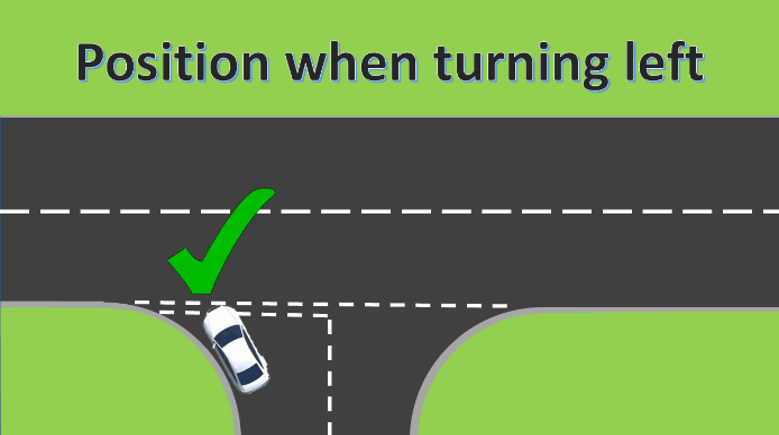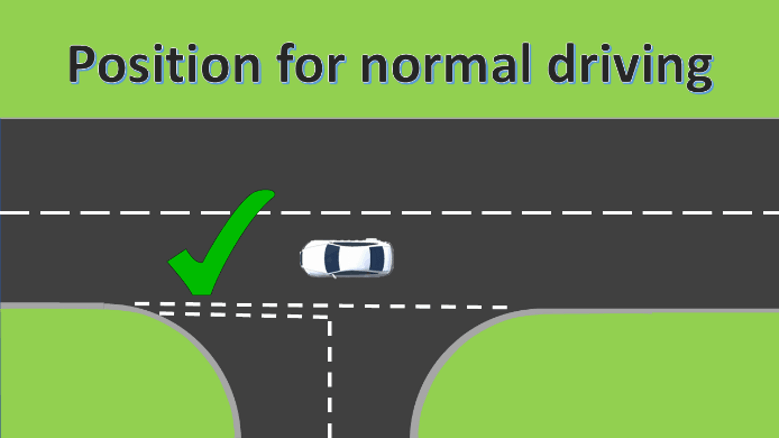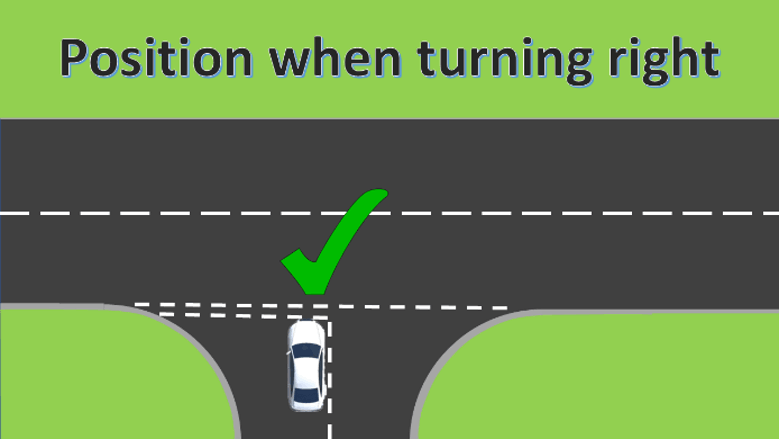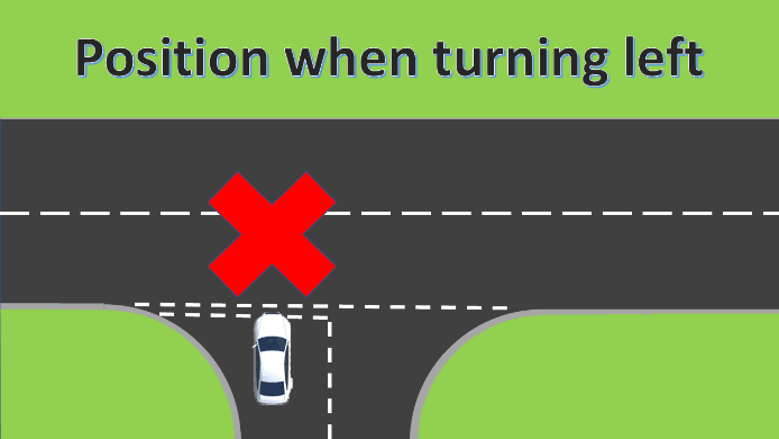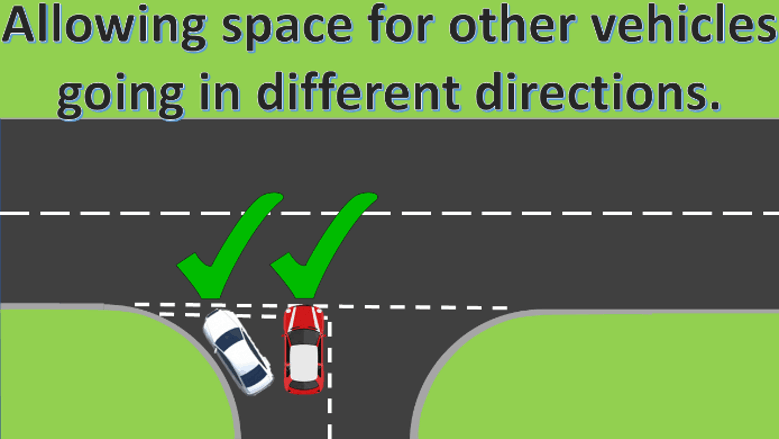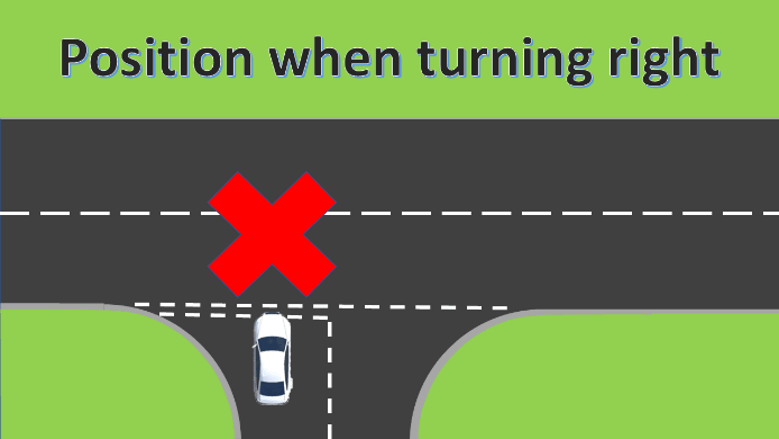
Emerging from Junctions

Emerging from Junctions
Without its use, we become a danger to ourselves and every other road user. Take a look at the routine by clicking on the link to Approaching Junctions
Turning left is without a doubt easier than turning right as you only have one major lane of traffic to be concerned about, however, that being said, it is still crucial that before committing to emerge you check there are no vehicles coming from your left that may be on the wrong side of their road possibly overtaking parked or moving cars.
Crossing two lanes of traffic when turning right carries an extra set of skills to be able to judge both directions of travels' approach speeds and then negotiate moving off when it is safe to do so to not interfere with either direction of traffic.
The best advice is if you don't know, don't go.
Waiting or being a little hesitant won't hurt anyone, but moving off when you shouldn't could well do.
The skill of judging approach speeds of oncoming vehicles takes time to learn, so give yourself adequate learning time to build this skill.
It is literally no different from when you learnt the skill to cross the road as a pedestrian as a child.
To start with you possibly had your parents hold your hand and guide you as when to cross.
Overtime, your "timing skills" grew and you learned when it was safe to cross.
The "timing" of when to go in a car is pretty much the same as it would be as a pedestrian. But this only works well if you are confident and competent with your clutch control and ensuring you have selected the appropriate gear.
The key to this skill, other than good clutch control and ensuring you are in the correct gear, is to look for a target vehicle and be ready to go the second that they pass you as long as there is a safe gap between the target vehicle and the next vehicle following them.
If you wait and allow the target vehicle to pass you and then begin to get ready to go, it is highly likely that by the time you get ready to go you will have lost your opportunity, and will need to look for the next opportunity.
So, arrive at the junction or roundabout and make sure the car is in 1st gear and ready to go, if you have needed to stop.
As the target vehicle begins to approach you, set your gas a little, find the biting point, and as the target vehicle is literally right in front of you, raise the clutch to get the car moving, join the new road and begin accelerating to match the speed of the car that has just past you whilst also checking your rear view mirror to see how quickly the vehicle following your target vehicle is catching you.
If the vehicle that was following the target vehicle is catching you quickly, just apply more pressure to the accelerator so that your speed build quicker so that you do not cause that vehicle to slow down. Obviously without breaking the speed limit for the road you are on.
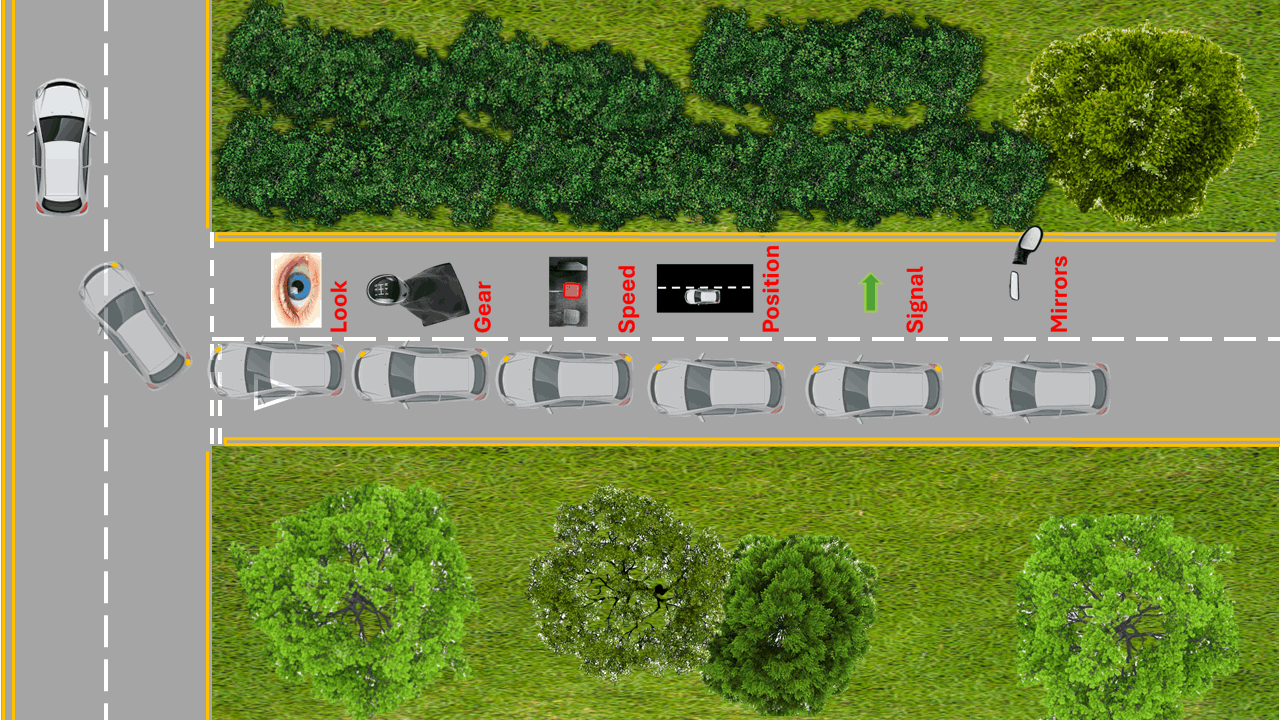
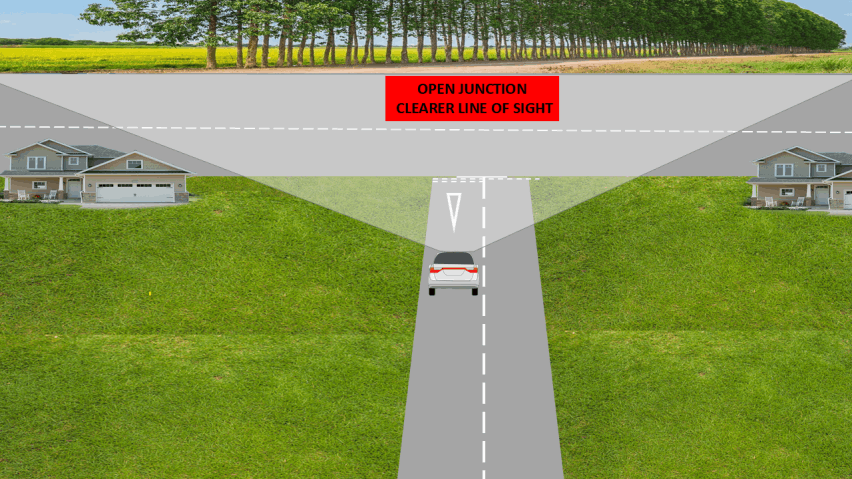
Arriving at an Open junction, your line of sight to the left and right extends clearly into the road to the left and right of you allowing you to make an informed decision early as to whether you can proceed as soon as you get to the end of the road, or whether you need to stop.
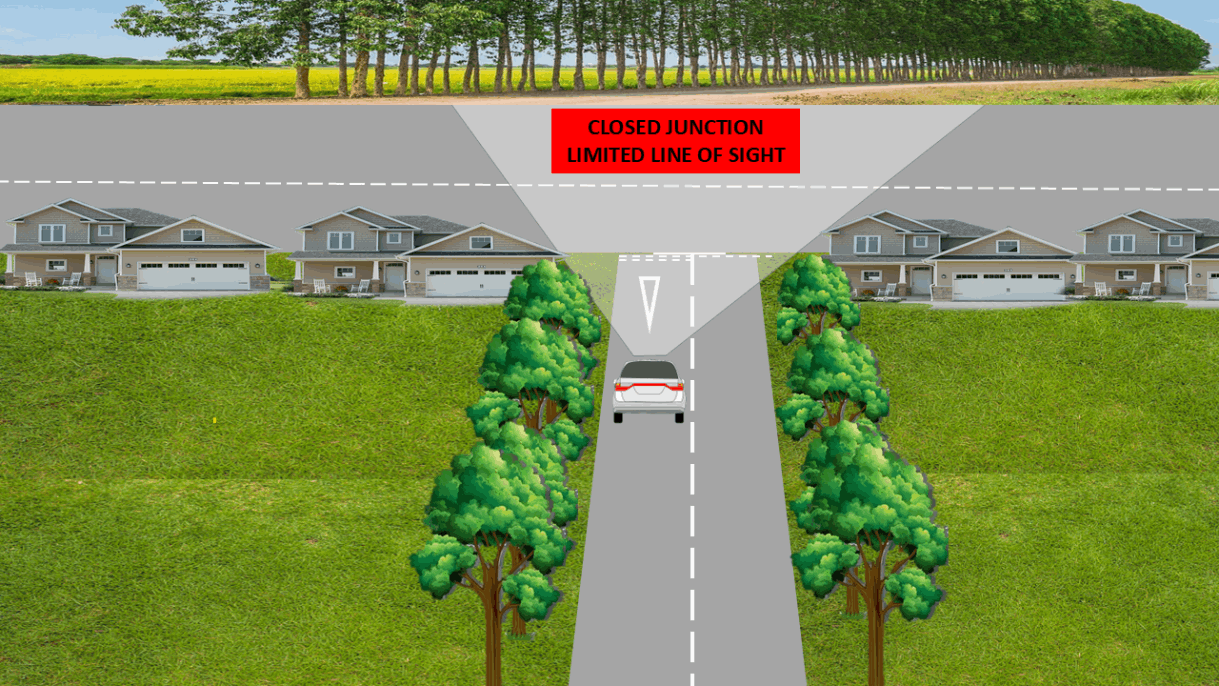
Arriving at a Closed junction your line of sight is extremely limited and you cannot clearly see into the road ahead of you to the left and right.
Even if you could see in one direction and not the other, it would be prudent to stop anyway, as you would not know if vehicles were overtaking in either of the directions you can not see.
Whenever you see a closed junction, you should always consider stopping or in the very least, reducing your speed to a crawl until you are sure it is safe for you to proceed.
